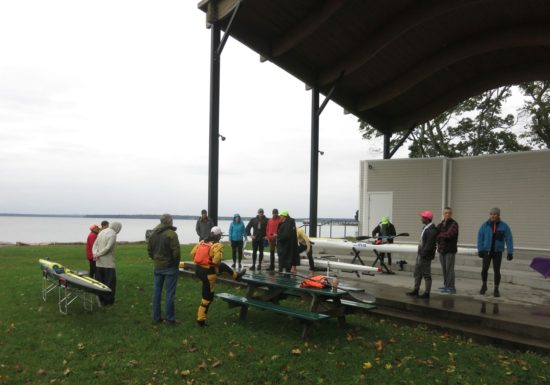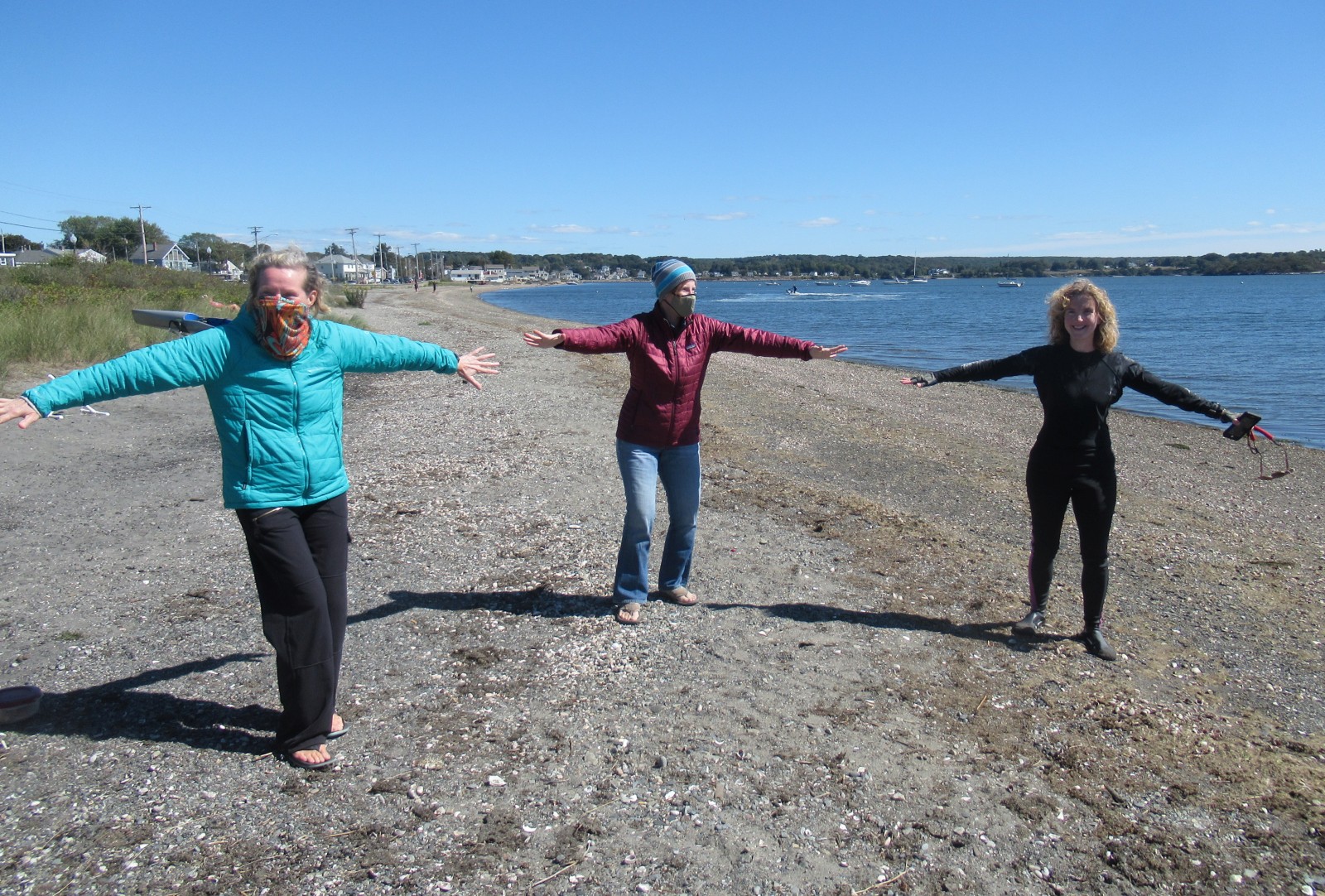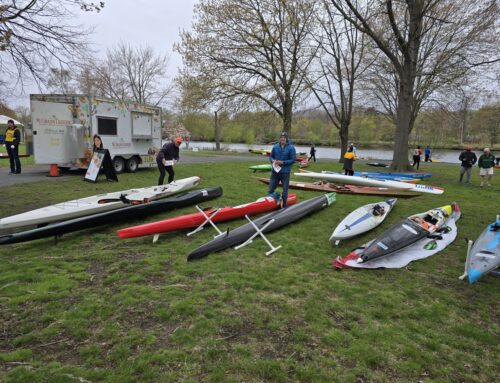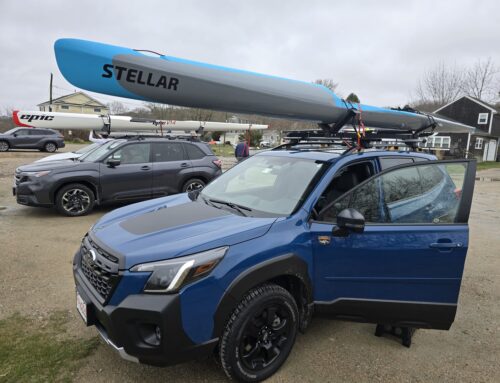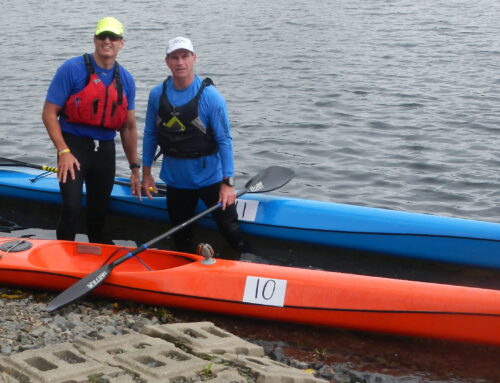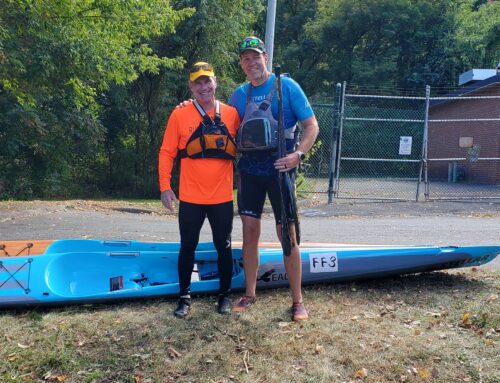I have been paddling on the Sakonnet River launching from McCorrie Point since I first started paddling my P&H plastic Capella over 20 years ago. The Sakonnet with its small bay conditions is a perfect training grounds for all things paddling. Its complexity of waves increases slowly over six miles until it opens up at Black Point to transition from small bay conditions to the ocean. So you can see why it is a perfect location to train, review surf skis, and hold races. Over the 12 years I have hosted it, we have had conditions ranging from glass to a Northeaster. Because my goals always are to have a race that is suitable for intermediate and advanced paddlers, I sometimes alter the course to accommodate the intermediate paddlers with safety in mind.
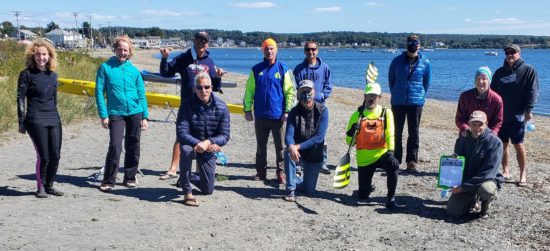

This year’s race, I postponed the race from June to September 26 due to forecasted thunderstorms and I was hoping the Rhode Island COVID 19 rules would allow more participants for outdoor events by September since I typically have 20-25 racers. This was not the case, so 15 racers towed the start line, the allowable number at this time. I also had to change the start line to Island Park, 3 miles up the river to accommodate the newly implemented COVID 19 rule for McCorrie Point Beach to Portsmouth residents only. Next year I hope to get a waiver so I can continue to have the start and finish at McCorrie. With all that said this year’s race brought windy and subnormal temperatures in the ’50s.
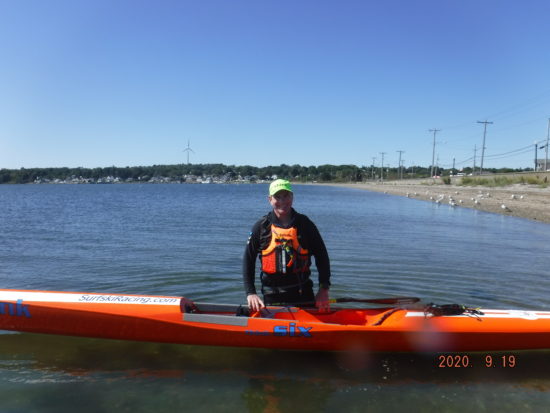
The Sakonnet has some of the best downwind in the surrounding of Newport and Jamestown when the wind is up. It is consistent, smooth, and can be one to three-foot seas with some four-foot sections. As the case with most of our races, what goes down must come up. So for the race, we enjoyed 4.5 miles of smooth gradually building downwind and then we grinded back to the start on this outback course.
In the women’s race, Mary Beth and Jean enjoyed the downwind staying close together. On the upwind leg, Mary Beth opened a gap on Jean with both finishing within three minutes of each other. Melinda, with far less ocean experience than the other women, pushed through the wind and outgoing tide with sheer determination. It was nice to have three women in the field of 15 paddlers.
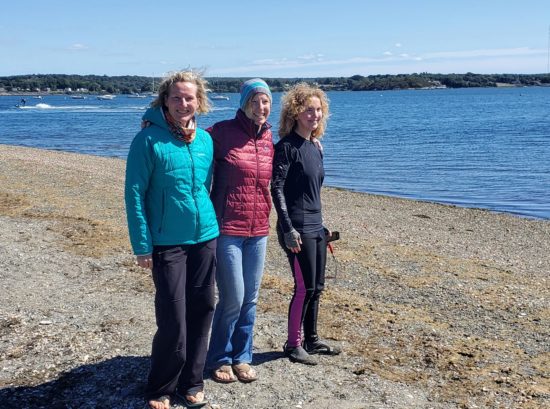
Since most of us race consistently with each other, you can reasonably predict how most of us will fare. There are still variables, however: how trained up one is, ocean conditions, course knowledge, weeds, and boat choice. In the men’s race, Chris Chappell jumped out to an early lead with Tim not too far behind and me a boat length behind. Greg, a consistent slow starter by his own admission, passed all us within a half-mile. Greg chose a very conservative course while Tim, myself, John Costello, and Jim Hoffman stayed out to capitalize on the wind and tides. Chris’s line was between Greg’s and the rest of us.
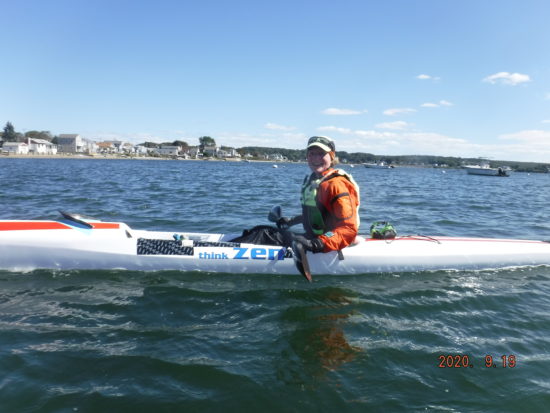
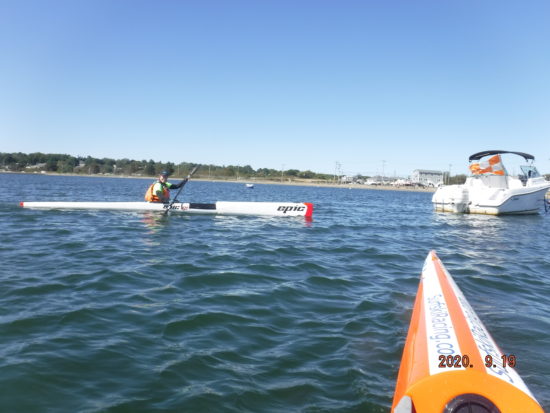
With northerly winds at our backs giving us a bigger push every quarter mile, we moved out of the lee of the start. It was high tide just before the start of the race so it took us to the 2-mile mark to really capitalize on the downwind as the waves got bigger. The tide flattened the waves out for us. Nevertheless, it was a blissful ride down to Sandy Point for 4.6 miles. I enjoyed the fastest mile from McCorrie Point to Sandy Point with an average speed of 7.9 mph. I was a little conservative on the downwind leg, knowing the return leg against tide and wind would a very hard leg. I did, however, step on the gas a few times, as I could see John to my left growing even with me. I did want to arrive at the turn buoy before him knowing he would undoubtedly reel me in on the upwind section since he is such a strong paddler and has been training a lot. So I arrived at the turn buoy in 3rd place feeling pretty good.
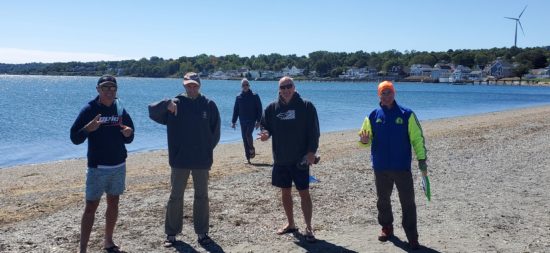
I was only 15 seconds behind Tim at the turn while holding off John on this downwind section. Jim enjoying the downwind experience so much, overshot the appropriate approach for the turn buoy. This also happened to Greg who approached the turn from the westerly side of the river adding valuable time to his race despite having an approximate minute or more on Tim at the turn.
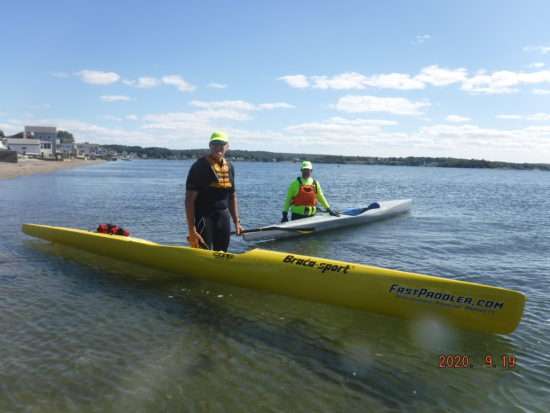
On the return, leg followed Tim’s line fairly close to shore to stay out of the wind and tide as much as possible. Others decided to go directly in wind and current hoping this line would yield greater benefits. Others, I think out of necessity, some chose this line because taking the line closer to shore required better boat handling skills to be able to hold the line with strong winds and chop on the quarter beam.
As I maintained my distance from Tim until McCorrie Point, Tim made a big push for the last 3 miles opening up a gap and closing the gap on Greg who took the straight line. John took a more direct line after drawing close to me off McCorrie Point. John opened his gap on me as well as I watched him the last 1.5 miles of the race. With my attention on Tim and John, I almost failed to see Jim clawing his way back to me, a quarter of a mile to my right. So with a mile to go to the finish and some left in the tank, I was almost sprinting taking my heart rate from in the mid 140s to 156 trying desperately to hold off Jim by 10 seconds at the finish.
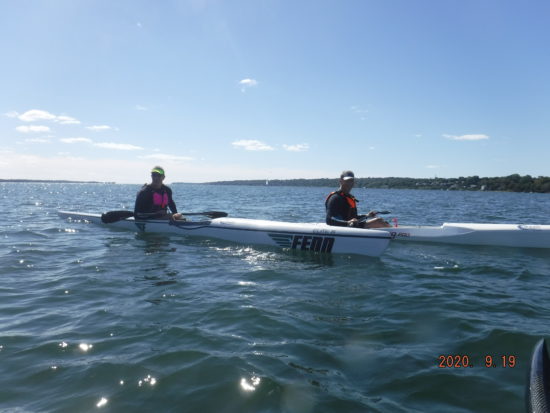
So despite a delay in this years race and Covid 19 beach restrictions on McCorrie Beach, Island Park Beach provided a great alternative and paddlers eager to race made the most of it. We had a few newcomers too, Jerry, John C. , John R., and Melinda. The next race is the Plum Island Lighthouse Race in Wickford, Rhode Island on a great course and very nice beach. Register on PaddleGuru.
